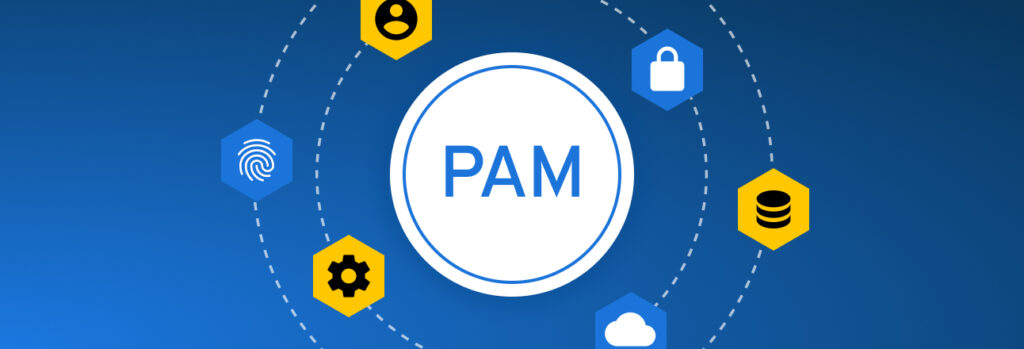The main difference between Remote Browser Isolation (RBI) and Virtual Desktop Infrastructure (VDI) is that RBI is limited to providing remote access only to your web
Privileged Access Management (PAM) in cybersecurity is how organizations manage and secure access to highly sensitive accounts, systems and data. Without PAM, organizations are at greater risk of a cyber attack impacting privileged accounts.
Continue reading to learn more about PAM and its crucial role in cybersecurity.
What is Privileged Access Management?
Privileged access management is an area of cybersecurity that focuses on simplifying how organizations manage and secure access to highly sensitive systems and data. This includes access to payroll systems and IT administration systems, to name a few.
Within any organization, there are users who need privileged access, including HR professionals, finance employees, account administrators, C-suite executives and security personnel. As organizations expand, it becomes more difficult for organizations to manage these privileged users, which is why many organizations seek out PAM solutions.
The Importance of PAM in Cybersecurity
Here are some of the reasons why PAM is important for organizations to implement.
Enables visibility into networks, applications, servers and devices
Without a PAM solution, it’s almost impossible for administrators to achieve complete visibility into their data environments, which may include both cloud and on-premises systems and infrastructure. With a comprehensive PAM solution, administrators are able to track and control all systems, applications and devices that require privileged access.
Reduces cyber risks
Because PAM solutions aid administrators in securing and managing privileged accounts, it becomes harder for threat actors to compromise them. PAM solutions mitigate the risk of internal threat actors misusing privileged accounts, since only privileged users are granted access to them.
Enhances employee productivity
A comprehensive PAM solution enables administrators to delegate access from a central dashboard rather than having to manually configure access to systems or accounts. This saves administrators and end users time – enhancing overall productivity.
Password management being part of PAM means employees and IT administrators don’t have to worry about passwords and how they’re being shared. IT has complete visibility into who has access to which accounts and when those passwords should be updated. An added benefit to password management is employees don’t need to manually type in passwords because they’ll be autofilled whenever they log into one of their accounts, which can save them time in the long-run.
If your PAM system includes remote connection management, employees can perform tasks remotely that they would otherwise have to travel into the office for. The ability to access systems remotely enhances employee productivity when they’re working from home.
Simplifies compliance
Regulatory and compliance frameworks require organizations to implement management and auditing capabilities for privileged user accounts. A PAM solution helps support compliance with many frameworks, including HIPAA, PCI DSS, FDDC, FISMA and SOX.
These frameworks require organizations to follow the Principle of Least Privilege (PoLP) when assigning user permissions. The PoLP is a cybersecurity concept in which users are only given access to the data and systems they need to do their jobs, and no more.
How PAM Protects Organizations Against Cyber threats
Every organization is at risk of being targeted by cybercriminals attempting to access sensitive data. It’s estimated that the cost of cybercrime will hit $8 trillion in 2023 and grow to $10.5 trillion in 2025. The aftermath of a cyber attack for organizations can be devastating and result in significant financial and reputational losses – making it vital to implement cybersecurity solutions that will lessen the impact of cyber attacks or prevent them altogether. A PAM solution should be a high priority for organizations seeking to protect their most critical assets.
What cyber threats can PAM help mitigate?
While no cybersecurity solution will eliminate cyber threats completely, a PAM solution can help organizations mitigate password-related cyber attacks, including:
Supply chain attacks
Supply chain attacks, also known as third-party attacks, are when threat actors access an organization’s network through a third-party vendor or supplier. This type of attack can come in many forms, but it often involves compromising a vendor’s login credentials.
A PAM solution can help mitigate this type of cyber threat since it provides administrators with a bird’s eye view of privileged accounts and who has access to them, including third-party vendors and suppliers.
Insider attacks
Insider attacks occur from within an organization. Insider attacks can be carried out intentionally or unintentionally by employees, former employees, suppliers and contractors. According to Techjury, insider threats increased 44% from 2021 to 2022.
Privileged accounts are high-value targets for threat actors, so it’s crucial for organizations to have a PAM solution in place to manage who has access to privileged accounts and systems. If employees are given access to privileged systems that they don’t need to do their jobs, one mistake can cause significant damage to an organization.
Organizations Must Integrate PAM Into Their Cybersecurity Strategy
An effective cybersecurity strategy should address all aspects of security, including access to privileged systems and accounts. If unsecured privileged systems are a part of a cyber attack, there can be significant financial losses and devastating aftermath, with a lengthy recovery period for the organization.
However, it’s important to note that not all PAM solutions are created equal. Legacy PAM solutions are very complex and costly to implement. According to our Privileged Access Management Survey, 84% of IT leaders reported that they want a simplified PAM solution, and 87% said they would prefer a PAM solution that is easier to deploy and use. Luckily, Keeper Security has engineered a comprehensive PAM solution that is both cost-effective and easy to implement.
KeeperPAM is a next-generation PAM solution that unifies all the important elements of comprehensive privileged access management into one unified platform. KeeperPAM unifies Keeper Enterprise Password Manager (EPM), Keeper Secrets Manager (KSM) and Keeper Connection Manager (KCM) so organizations can simply and effectively manage employee passwords, secrets and remote access.
To learn more about KeeperPAM and how it can strengthen your organization’s cybersecurity, request a demo.
 PAM
PAM 
